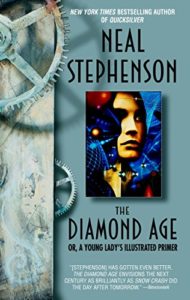Do machines complement labor, leading to higher wages and better living standards for ordinary workers? Or do they substitute for labor, driving down living standards for ordinary workers and concentrating wealth in the hands of the few?
We are now in the midst of what many economists call the Second Industrial Revolution. The First Industrial Revolution introduced machines with physical power. The Second Industrial Revolution induces machines with mental power.
The First Industrial Revolution began late in the 18th century. Early on, observers such as Charles Dickens and Karl Marx focused on the harsh conditions of the working class. But by the latter part of the 20th century, it was evident that most workers had achieved much higher living standards. It now appears that industrial age machines turned out to be complementary with labor. If there was a loser from the Industrial Revolution, it was the horse.
How will the Second Industrial Revolution turn out? These five books offer differing perspectives. In chronological order, they are:
Robert Reich, The Work of Nations, 1992. Reich saw that the future did not bode well for America to have a large manufacturing work force. He saw information-age technology as complementary with workers whose skills involve manipulating symbols–words, numbers, and computer code. But it would substitute for workers who manipulate things. As he saw it, America needed to train its work force to be symbol analysts.

Neal Stephenson, The Diamond Age, 1995. In this science fiction novel, Stephenson depicts a world in which nanotechnology, as described in Eric Drexler’s monograph “Engines of Creation,” has matured. As a result, no one lives in hardship. Any standard product can be made cheaply by a “matter compiler,” what we would now think of as a 3D printer with superlative capabilities. Machines have substituted for labor to the point where a lower class, called “thetes,” enjoys a coarse consumer lifestyle without having to work. An upper class, called “Vickies,” has skills that complement the machines, and this elite indulges in a taste for old-fashioned hand-crafted goods.
Ray Kurzweil, The Age of Spiritual Machines, 1999. This is not a novel, but to many it reads like science fiction. Kurzweil depicted a future in which artificial intelligence would catch up with and surpass human intelligence. At that point, computers would be a substitute for every current form of work but still complementary with the human race, as humans and computers would eventually merge.

Robert Fogel, The Escape from Hunger and Premature Death, 1700 – 2100. Fogel, an economic historian and Nobel Laureate, points out that there is a long-term trend of a rising share of consumption devoted to education and health care and a corresponding decline in the share devoted to food and manufactured goods. If he is correct—and I believe that he is—then the many politicians, commentators, and policy wonks who argue for trying to preserve American manufacturing jobs are engaging in a Canute-like exercise of trying to hold back the tide.
Tyler Cowen, Average is Over, 2013. Cowen points out that modern communication technology means that star performers in business and the arts can reach any and every consumer. This makes superfluous the merely good artist or the merely good business. This raises the possibility of a two-class society, reminiscent of that depicted by Stephenson.
As an Amazon Associate, Econlib earns from qualifying purchases.


READER COMMENTS
nobody.really
Oct 9 2020 at 12:39pm
A fine list. May I note a few others?
Before Cowen’s Average is Over (2013), Eric Brynjolfsson and Andrew McAfee wrote Race Against the Machine (2011), describing how quickly the capabilities of software and robots are improving, and the disruptions this would have for the labor force. And Martin Ford’s <i>Rise of the Robots</i> (2015) describes a post-work world with robots and machine intelligence running everything, triggering the need for a techno-socialism. Similar themes can be found in Thomas Piketty’s Capitalisms in the Twenty-First Century, Chris Hayes’s Twilight of the Elites, and Ryan Avent’s The Wealth of Humans (2016).
But in truth, they were all late to the party. In 1930 John Maynard Keynes wrote “Economic Possibilities for our Grandchildren,” describing his view of how the economic future would unfold.
At the time, the world was caught in a deepening depression. “We are suffering just now from a bad attack of economic pessimism,” Keynes noted. But Keynes believed that, once the world had overcome its Depression, growth would resume and living standards would return to the upward path they’d been on previously. He acknowledged that rapid technological improvement would cause some short-term discomfort (“a temporary phase of maladjustment”), but urged readers not to lose sight of the big picture:
Keynes predicted that time spent working would dwindle to perhaps fifteen hours a week, and then to nothing. And the main problem humanity would face would be just what to do with itself in a world of abundant leisure.
Thus far, Keynes has been right: Rich economies have already experienced at least a fourfold improvement in living standards. It seems likely that some, by 2030, will enjoy an eight-fold rise.
But we achieve this astonishing productivity with ever less demand for labor. What are we going to do with this abundance of leisure? And how much longer can we stumble on, pretending that the labor market is a sufficient means for distributing the abundant wealth of our society?
Once upon a time, Friedrich Hayek warned that excessive government intervention in the market would lead to the Road to Serfdom (1944). Reading the many authors who predict the stratified world of the future, I have to ask–where does our current road lead?
Andjuar Cedeno
Oct 10 2020 at 12:40am
This statement”the many politicians, commentators, and policy wonks who argue for trying to preserve American manufacturing jobs” assumes that politicians lead. What about the alternative, that politicians follow the lead of the people, and it was the “people” who led the “trend of a rising share of consumption devoted to education and health care” not the government or economists, and the people decided that continued investment in education and health care reached a point of diminishing returns because of the loss of manufacturing jobs caused by that investment.
Michael Pettengill
Oct 13 2020 at 8:33pm
The problem as I see it is that economists have convinced themselves that the age of industry is over because its been possible to build/produce so little in the US because Keynes economic policy built so much prior to the 70s that simply finishing off that industry policy would support the economy for a few decades, other than in big government tax and spend States like California and its allies.
The cost has been making most of the US land area undesirable for not just industry, but any economic activity. A large area no longer supports any growing business because any business requires investment that requires industry. High speed internet in small town Indiana and Kansas will not happen by magic, but only by factories building the stuff of FiOS and industrial construction workers building the FiOS network to every address in the US. And while the Internet might eliminate moving people, it can’t eliminate moving toilet paper, food, tables and chairs, but the US has slowed and reduced the capacity to move stuff around all the US by eliminating transportation industry production.
By not paying industrial workers to produce as much for the US as other nations, the US has made it harder, if not impossible, for US industry to produce in the US. That in turns has driven consumers out of large portions of the US. No consumers, no workers. The Indiana town I grew up in when it was growing rapidly in the 50s and 60s, has depopulated by 25% since 1970.
nobody.really
Oct 14 2020 at 1:57pm
Not following everything here. But, until COVID, I think US industrial production was at an all-time high.
However, manufacturing EMPLOYMENT declined from 1980 to 2010. It grew gradually since then, but COVID knocked us back to 2010 levels.
In short, thanks to automation, we now produce more stuff than ever–but with fewer people than ever. People working in manufacturing tend to earn a good wage–but there aren’t as many of them.
Comments are closed.